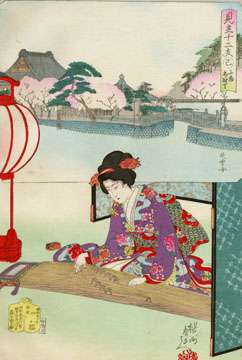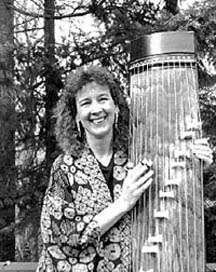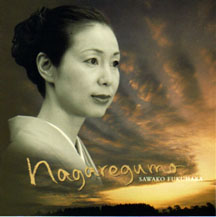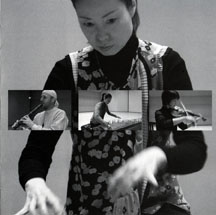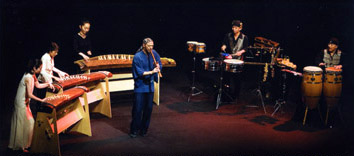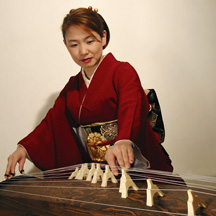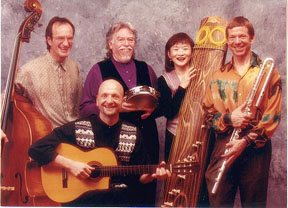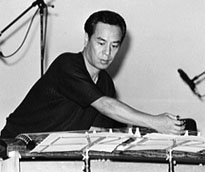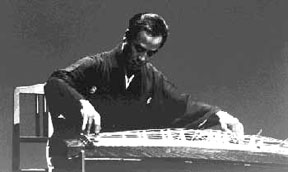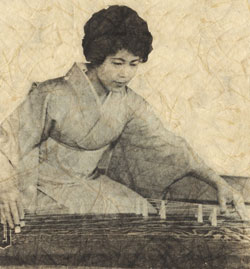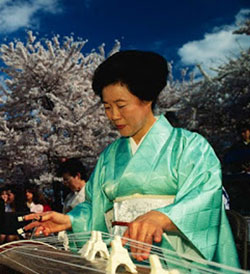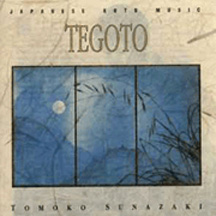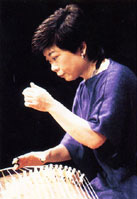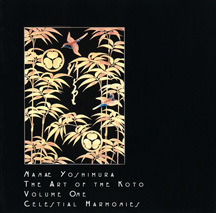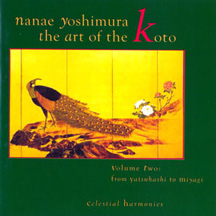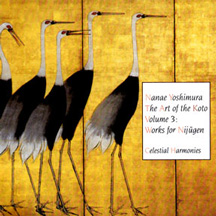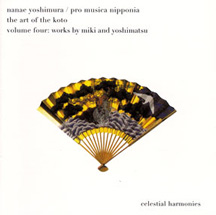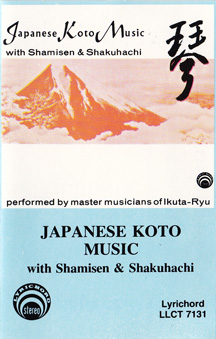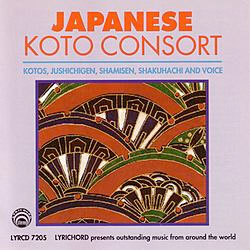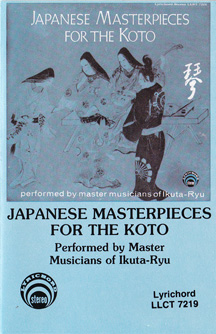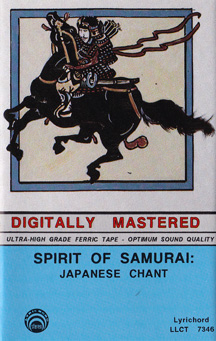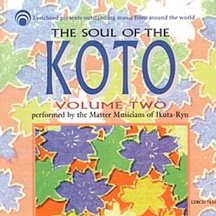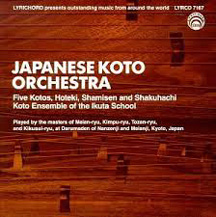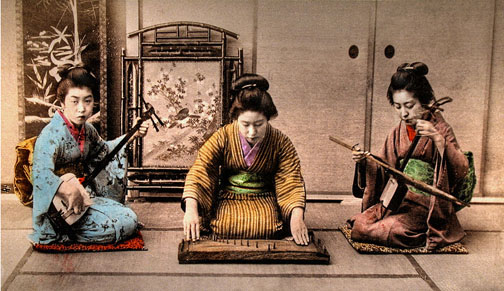 |
Sankyoku Music Classical Japanese Chamber Music Shakuhachi performed in ensemble with |
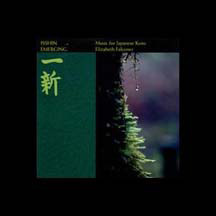 |
K6a. ISSHIN - EMERGING |
CD |
$17.50 |
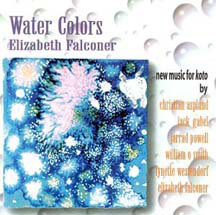 |
K6b. WATER COLORS New music for koto by Pacific Northwest composers. |
CD |
$16.50 |
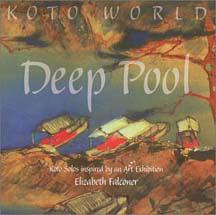 |
K6c. DEEP POOL Koto solos inspired by an art exhibition. |
CD |
$16.50 |
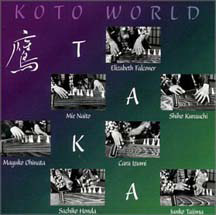 |
K6d. TAKA KOTO ENSEMBLE Original compositions by Elizabeth Falconer and Tadao Sawai. |
CD |
$16.50 |
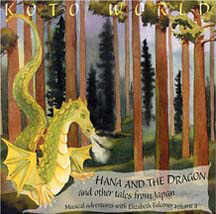 |
K6e. HANA AND THE DRAGON and Other Tales from Japan Storytelling with koto accompaniment. |
CD |
$16.50 |
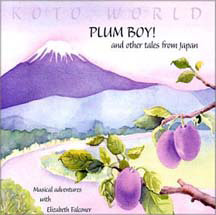 |
K6f. PLUM BOY! and Other Tales from Japan Storytelling with koto accompaniment. |
CD |
$16.50 |
SAWAKO FUKUHARA began studying koto as a child with her aunt Misuyo Mizushima. She was trained as a classical koto playet until completion of the special course for traditional Japanese musicians sponsored by NHK. In 2005, she was received the Kyoto Cultural Promotion award for her work at the Udesaki School. Adept at playing both traditional and modern compostions, Sawako performs regularly with John Kaizan Neptune. |
|
K9a
[I] Original compositions for shakuhachi, koto & violin by John Kaizain Neptune, Tadao Sawai & Keigo Fujii. 1. Tori no Youni (Like a Bird) - by Tadao Sawai Produced by John Kaizan Neptune.
|
CD |
$18.00 |
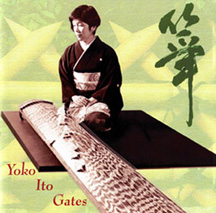 |
K8a. YOKO ITO GATES Yoko Ito Gates was a great performer, and for those who knew her closely, a wonderful teacher. This 2-CD memorial collection of her recordings includes live performances from the 1970's and 1980's. Showing the range of her interests and abilities, it features Yoko playing koto, shamisen and singing. The earliest koto music on this CD is represented by Yatsuhashi Kengyo's Hachidan. Classical sankyoku pieces are accompanied by two of the greatest shakuhachi players of the post-WWII era. Araki Kodo V performs on Zangetsu and Living National Treasure Aoki Reibo on Konkai. Akikaze no kyoku is from the late classical period telling the story of an ancient Chinese emperor's fateful love for the beautiful Yang Kwei Fei. Kobai (composed ca. 1700) is a short song from the Taisho period. The remaining four pieces show Yoko's interest in contemporary music. One koto solo, one recent piece for koto and violin, another koto solo commissioned by Yoko from the modern composer Thomas Svoboda, and finally a haunting duet, Kazuko, with Pharoah Sanders on saxophone. Disk 1 Disk 2 Produced by Robin Hartshorne,
co-director of Rei in Kai. |
Double Album |
$30.00 |
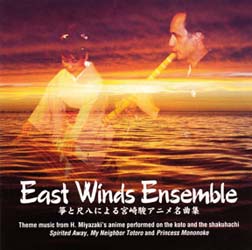 |
|
CD | $17.50 |
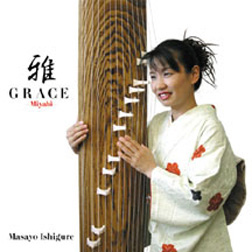 |
K2a. GRACE - MIYABI |
CD |
$17.50 |
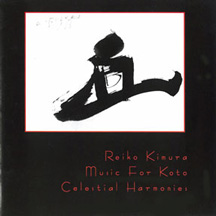 |
1. Midare |
CD |
$17.50 |
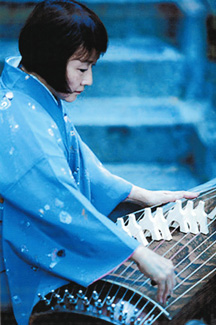 |
SHIRLEY KAZUYO MURAMOTO is director of the MURASAKI ENSEMBLE and a Yonsei or 4th generation American of Japanese descent, born and raised in the San Francisco Bay Area. The art of the koto was passed down to her by her mother, who played as a young girl in the American relocation camps of World War II. Shirley has studied in Japan and received many awards for her distinguished playing. Shirley is the producer of a remarkable new video Hidden Legacy: Japanese Traditional Performing Arts in the World War II Internment Camps.
|
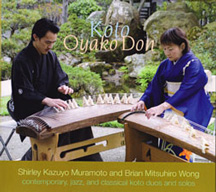 |
K1f. KOTO OYAKO DON with Brian Mitsuhiro Wong |
CD |
$15.00 |
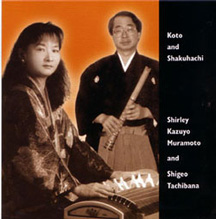 |
K1d. KOTO & SHAKUHACHI with Shigeo Tachibana Gaikyoku. Ensemble music for strings and wind. |
CD |
$16.50 |
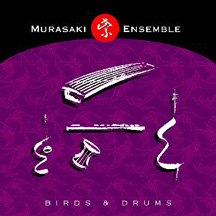 |
K1e. BIRDS & DRUMS CD Orignal compositions as well as pieces composed by jazz greats Duke Ellington & Horace Silver, John Lennon & Paul McCartney and others. |
CD |
$16.50 |
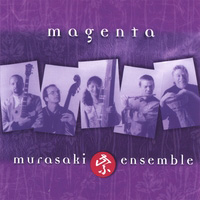 |
K3c. MAGENTA $16.50 Orignal compositions. |
CD |
$16.50 |
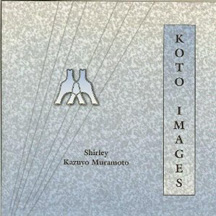 |
K1b. KOTO IMAGES Classical koto pieces. |
C CD |
$10.50 $16.50 |
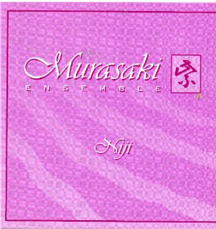 |
K1a. MURASAKI ENSEMBLE-NIJI Original compositions, traditional & jazz. |
C CD |
$10.50 $16.50 |
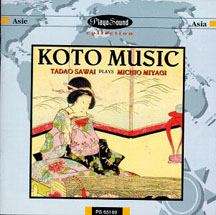 |
K7a. TADAO SAWAI PLAYS MICHIO MIYAGI [I] One of Japan's most celebrated koto performers honors the instrument's most renown composer. 1. Tegoto (First Movement - Tegotofu) |
CD |
$17.50 |
